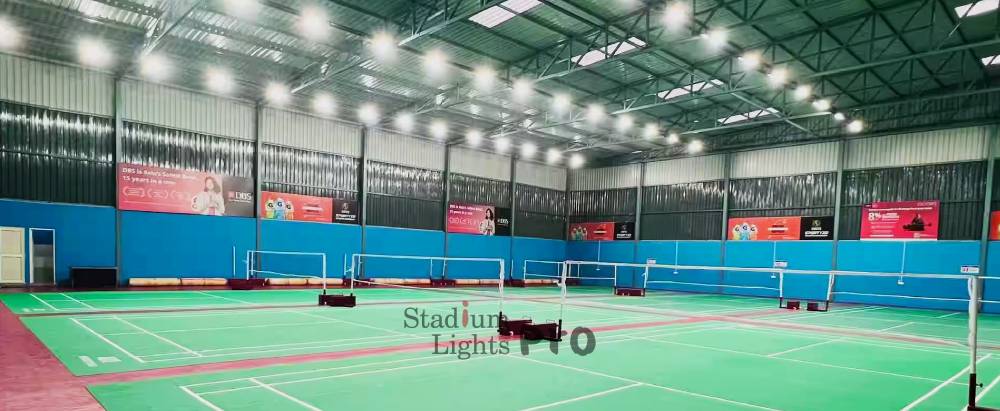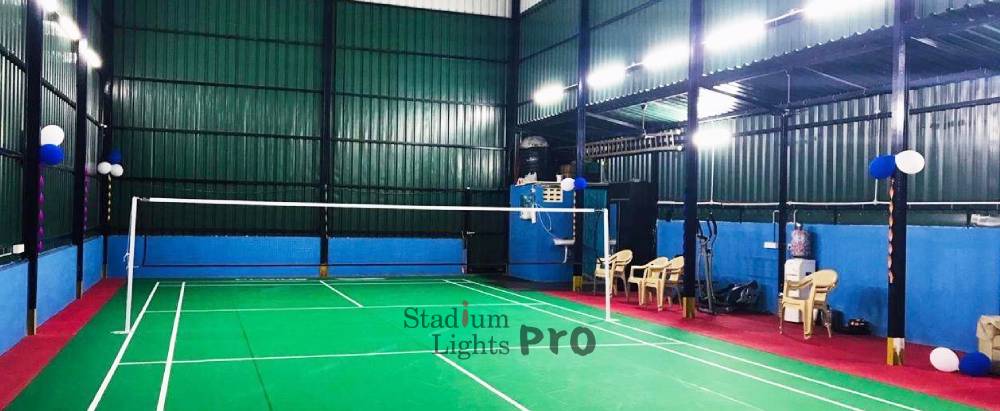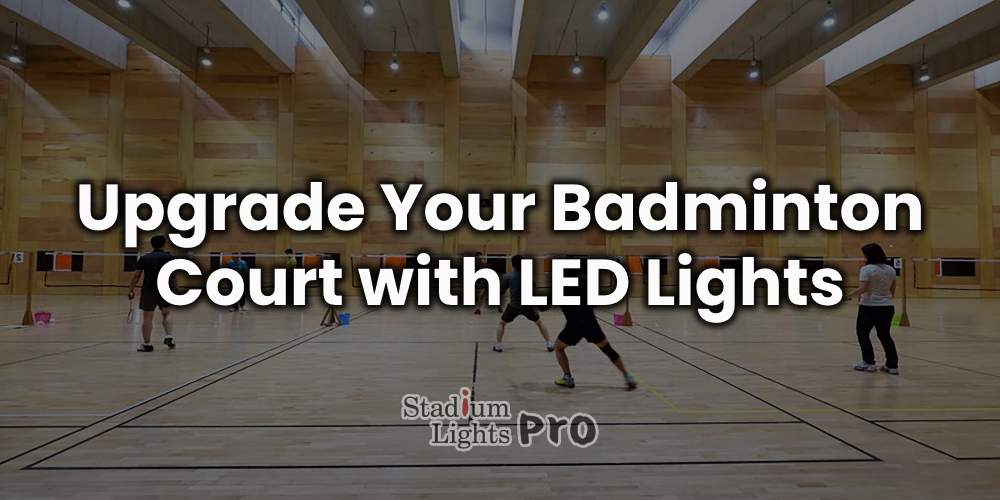Traditional lighting solutions often fall short in performance and efficiency, making LED technology a compelling choice. This article delves into the disadvantages of common lighting options, the advantages of LED lights, the costs involved in upgrading, the potential savings, and key factors to consider during the upgrade process.
Table of Contents
ToggleLimitations of Traditional Lighting Solutions
Traditional lighting systems, such as incandescent and fluorescent bulbs, have been the standard for sports facilities for decades. However, they come with several disadvantages that impact both performance and operational costs.
Short Lifespan and Frequent Maintenance
A major disadvantage of traditional lighting systems is their relatively short lifespan. Incandescent bulbs, for example, typically last around 1,000 hours before needing replacement. This is notably shorter than the lifespan of modern alternatives, such as LEDs, which can last tens of thousands of hours. Fluorescent lights fare somewhat better, lasting between 7,000 and 15,000 hours. However, frequent replacements are still necessary, leading to increased maintenance costs and operational downtime. In sports facilities, where uninterrupted lighting is crucial for events and practices, this downtime can disrupt schedules and affect overall performance. The need for regular maintenance also means that facility managers must allocate time and resources to replace bulbs, which could otherwise be spent on improving other aspects of the facility.
Subpar Light Quality and Inconsistent Illumination
Traditional lighting solutions are known for their subpar light quality compared to modern alternatives. Incandescent bulbs emit a warm, yellowish light that can distort colors and reduce visibility. This is particularly problematic in sports facilities where accurate color perception is essential. For example, in badminton, the visibility of the shuttlecock can be compromised by the yellowish hue of incandescent lighting, making it harder for players to track the shuttlecock’s speed and trajectory. Fluorescent lights, while more energy-efficient than incandescent bulbs, can suffer from issues such as flickering and uneven illumination. These inconsistencies not only affect the visual comfort of players and spectators but also impact the overall playing experience by making it more difficult to perceive details accurately.
Energy Inefficiency and Higher Operating Costs
Energy inefficiency is another significant drawback of traditional lighting systems. Incandescent bulbs are particularly inefficient, converting less than 10% of the electrical energy they consume into visible light. The remaining energy is lost as heat, which not only contributes to higher energy bills but also adds to the cooling load in sports facilities. Fluorescent lights, although more efficient than incandescent bulbs, still fall short when compared to modern LED technology. LEDs are significantly more efficient, converting a higher percentage of electrical energy into light and generating less heat. As a result, traditional lighting solutions contribute to higher energy consumption and increased operating costs. This inefficiency also translates into a larger carbon footprint, which is a growing concern for environmentally conscious organizations and facilities aiming to reduce their environmental impact.

Benefits of LED Lighting
Light Emitting Diodes (LEDs) represent a significant leap forward in lighting technology, offering numerous advantages over traditional lighting systems. Their superior performance, efficiency, and environmental benefits make them an excellent choice for upgrading badminton court lighting.
Superior Light Quality
One of the most notable benefits of LED lighting is its superior light quality. LEDs emit a bright, white light that closely mimics natural daylight, enhancing visibility and contrast on the badminton court. This is crucial for players who need to track the shuttlecock with precision. Unlike incandescent and fluorescent lights, which can produce a warm or flickering light, LEDs provide a consistent and uniform illumination. This uniformity reduces shadows and minimizes glare, ensuring that every corner of the court is evenly lit. As a result, players can see the shuttlecock more clearly and react more quickly, which can improve overall gameplay and reduce eye strain during extended play sessions.
Energy Efficiency and Cost Savings
Energy efficiency is one of the most compelling reasons to switch to LED lighting. LEDs are highly efficient, converting nearly 90% of electrical energy into visible light, with only a small fraction lost as heat. This contrasts sharply with incandescent bulbs, which convert less than 10% of energy into light and waste the remainder as heat. The efficiency of LEDs leads to significantly lower energy consumption, which directly translates to reduced electricity bills. Additionally, LEDs have an exceptionally long lifespan, typically ranging from 70,000 to 120,000 hours. This extended lifespan reduces the frequency of bulb replacements, lowering maintenance costs and minimizing disruptions to court use. By investing in LED lighting, facilities can achieve substantial cost savings over time, making it a financially sound choice in addition to its performance benefits.
Reduced Heat Emission
Traditional lighting systems, particularly incandescent bulbs, are known for their significant heat generation. This excess heat can make the playing environment uncomfortably warm and may necessitate the use of additional cooling systems to maintain a comfortable temperature. In contrast, LEDs produce very little heat, which helps to keep the playing environment cooler and more pleasant. This reduction in heat emission not only enhances player comfort but also reduces the need for supplementary cooling, further contributing to energy and cost savings. By minimizing heat generation, LEDs help create a more controlled and enjoyable playing environment, which can be particularly beneficial during intense games and practice sessions.
Costs of Upgrading to LED Lighting
Upgrading to LED lighting represents an investment that involves initial costs, but it is important to consider the long-term benefits and potential savings. The overall cost of transitioning to LED lighting for a badminton court is influenced by several factors, including the size of the court, the type and number of fixtures, and the complexity of the installation process.
Initial Investment
The initial cost of LED lighting systems is generally higher compared to traditional lighting options such as incandescent or fluorescent bulbs. This is due to the advanced technology and higher quality of LED fixtures. As of 2024, the cost of high-quality LED fixtures for a standard badminton court can range between $4,000 and $10,000. For example, high-end LED fixtures designed to provide optimal illumination for sports applications can cost around $200 to $500 each. Considering that a badminton court typically requires 20 to 40 fixtures to achieve proper lighting, the total cost of fixtures alone can range from $4,000 to $20,000.
However, it is worth noting that the price of LED technology has been steadily decreasing over the years due to advancements in manufacturing and increased competition in the market. This trend makes LED lighting more accessible and affordable for a wider range of facilities. The initial investment, while higher than traditional lighting systems, is offset by the long-term savings and benefits offered by LEDs.
Installation Costs
Professional installation of LED lighting systems is crucial to ensure optimal performance and safety. Installation costs can vary widely based on the complexity of the setup, the existing infrastructure, and any necessary modifications. On average, the installation of an LED lighting system can cost between $2,000 and $5,000. This estimate includes labor, electrical upgrades, and any adjustments required to fit the new fixtures.
In some cases, additional modifications may be needed to accommodate the LED fixtures, which can add to the overall cost. For example, if the existing electrical infrastructure is not compatible with LED technology, upgrading the electrical panel or wiring might be necessary. These modifications can increase installation costs by several hundred to a few thousand dollars. For instance, upgrading an electrical panel might cost between $500 and $1,500, depending on the complexity of the work required.
Long-Term Savings
Despite the higher initial costs, upgrading to LED lighting offers substantial long-term savings. LEDs are highly energy-efficient, converting approximately 90% of electrical energy into visible light and producing minimal heat. This efficiency results in lower energy consumption and reduced electricity bills. For example, if switching to LED lighting reduces energy consumption by 60% compared to traditional lighting, a facility with an annual lighting cost of $10,000 could save up to $6,000 per year on energy bills.
Moreover, LEDs have a significantly longer lifespan compared to traditional lighting options. Incandescent bulbs typically need replacement every 1,000 hours, while fluorescent lights last between 7,000 and 15,000 hours. In contrast, LEDs can last between 25,000 and 50,000 hours. This extended lifespan reduces the frequency of bulb replacements and maintenance costs. For example, if replacing incandescent bulbs every 1,000 hours costs $1,000 annually, switching to LEDs could save approximately $1,000 per year in replacement costs alone.

Economic Benefits and Savings from Upgrading
Lower Energy Bills
One of the most compelling economic benefits of LED lighting is the substantial reduction in energy consumption. LEDs are far more energy-efficient compared to traditional lighting options such as incandescent or fluorescent bulbs. For example, switching from 500-watt metal halide lamps to 150-watt LED fixtures can reduce energy consumption by up to 70%. This drastic reduction in power usage translates directly into lower electricity bills.
To put this into perspective, if a facility previously spent $10,000 annually on electricity for traditional lighting, the same lighting with LEDs could potentially lower costs to around $3,000 annually, resulting in a savings of $7,000 per year. This reduction in energy bills contributes to a faster return on investment and can offset the initial costs of upgrading to LED technology.
Reduced Maintenance Costs
The long lifespan of LED lights compared to traditional bulbs is another significant economic advantage. LEDs typically last between 25,000 and 50,000 hours, whereas incandescent bulbs may last only around 1,000 hours and fluorescent lights between 7,000 and 15,000 hours. This extended lifespan means that LED fixtures require fewer replacements, leading to lower maintenance costs.
In practical terms, the reduced frequency of replacements means fewer service calls and less labor associated with changing bulbs. For instance, if a facility used to spend $2,000 annually on maintenance and replacement of traditional lighting, upgrading to LEDs could cut these costs by 50% or more, depending on the frequency of replacement required. The increased durability of LEDs, which are less prone to breakage and require less frequent servicing, further enhances their cost-effectiveness.
Extended Fixture Lifespan
The extended lifespan of LED fixtures not only reduces the need for replacements but also minimizes operational disruptions. Traditional lighting systems often require frequent maintenance, which can interrupt court activities and affect the overall user experience. LEDs, with their long operational life, ensure a more consistent and reliable lighting environment.
This longevity means fewer interruptions to court usage and a more stable lighting solution that supports ongoing activities without frequent disruptions. For instance, if traditional lighting required monthly maintenance, LEDs could extend this interval to several years, allowing for uninterrupted play and fewer operational headaches.
Improved Court Usage and Player Satisfaction
Enhanced lighting quality provided by LEDs improves visibility, reduces glare, and creates a more inviting environment for players and spectators. Better lighting conditions contribute to improved player performance and overall satisfaction, which can lead to increased court usage. Facilities with well-lit courts are more likely to attract users and host events, potentially increasing rental revenues and utilization rates.
For example, a badminton court that experiences higher usage due to improved lighting could see a rise in booking rates, translating to increased revenue. Additionally, satisfied players and spectators are more likely to return and recommend the facility to others, further enhancing its reputation and profitability.
Factors to Consider When Upgrading to LED Lighting
Lighting Design and Layout
A well-designed lighting layout is essential for achieving optimal performance in a sports facility. Effective lighting design involves several critical considerations, including light distribution, beam angle, and fixture placement. Uniform light distribution is crucial to avoid dark spots and shadows, which can negatively impact gameplay. Proper light distribution enhances visibility, making it easier for players to track the shuttlecock and respond quickly. The beam angle of the LED fixtures, which determines how the light spreads, must be selected to ensure that the entire court area is adequately illuminated. Fixtures with wider beam angles are particularly beneficial for larger areas to ensure even coverage. Additionally, strategic placement of fixtures is necessary to minimize glare and maximize coverage. The height of the ceiling and fixtures should also be taken into account to achieve the desired lighting effect. Consulting with a lighting professional can help design a layout tailored to the specific needs of the badminton court, leading to improved performance and player satisfaction.
Fixture Quality and Specifications
When upgrading to LED lighting, selecting high-quality fixtures is crucial for ensuring durability and reliable performance. Several factors should be evaluated to ensure that the lighting meets the court’s requirements. Color temperature, measured in Kelvin (K), affects the visual comfort and clarity of the lighting. For sports facilities, a color temperature between 4,000K and 5,000K is recommended, as it provides a bright, daylight-like appearance that enhances visibility and contrast. The Color Rendering Index (CRI) measures how accurately a light source reveals colors compared to natural light. A higher CRI, typically 80 or above, is preferable for sports facilities to ensure accurate color rendering and clarity. The lumen output of the LED fixtures, which indicates their brightness, should be sufficient to provide adequate illumination for the court. The required lumen level will depend on the size of the court and the desired brightness. Fixtures with adjustable settings and dimming options offer added flexibility, allowing for adjustments based on different lighting scenarios, such as varying light levels for practice versus competitive play. Choosing fixtures with these specifications ensures that the lighting system meets the performance needs of the badminton court and provides a high-quality lighting environment.
Compatibility with Existing Infrastructure
Before upgrading to LED lighting, it is important to assess how well the new fixtures will integrate with the existing electrical infrastructure. This includes evaluating the compatibility of the new fixtures with the current wiring and electrical systems. In some cases, modifications to the wiring or electrical panel may be necessary to support the new LED fixtures. Additionally, the compatibility of existing mounting systems with the new fixtures should be checked. If modifications or new mounting hardware are required, this can affect the overall cost and complexity of the installation. Assessing compatibility in advance helps to avoid unexpected costs and complications during the installation process, ensuring a smoother transition to the new lighting system.
Budget and Financing Options
While the long-term savings from LED lighting are significant, it is important to consider the initial investment and explore financing options to manage the upfront costs. Many utility companies offer rebates or incentives for energy-efficient upgrades, which can help offset the initial costs of purchasing and installing LED fixtures. Additionally, various government programs provide financial incentives or grants for energy-efficient improvements. Researching and applying for these programs can provide additional support for financing the upgrade. Some lighting suppliers or contractors also offer financing plans that allow you to spread the cost of the upgrade over time, making the initial investment more manageable while still benefiting from the long-term savings. Exploring these financing options can help reduce the financial burden of upgrading and make the transition to LED lighting more affordable.
Maintenance and Warranty
LED fixtures typically come with warranties that cover defects and performance issues, which is an important factor to consider when upgrading. Reviewing the warranty terms is essential to ensure that the fixtures are protected and supported throughout their lifespan. The warranty coverage, including the duration and types of issues covered, can vary significantly between manufacturers and products. It is also important to follow the manufacturer’s maintenance recommendations to maximize the lifespan and performance of the LED fixtures. Proper maintenance helps ensure that the fixtures continue to operate efficiently and reliably over their extended lifespan. By addressing these factors, you can ensure a successful upgrade to LED lighting that enhances performance, reduces costs, and provides long-term benefits for the badminton court.
Conclusion
Upgrading the lighting on a badminton court is a decision that pays dividends through enhanced performance and significant cost savings. While traditional lighting solutions like incandescent and fluorescent bulbs present numerous drawbacks—including short lifespans, inconsistent illumination, and higher energy consumption—LED technology addresses these issues with superior light quality, energy efficiency, and reduced heat emission. The initial investment in LED lighting is offset by the long-term benefits, including lower energy bills, reduced maintenance costs, and an extended fixture lifespan. By considering factors such as lighting design, fixture quality, and compatibility with existing infrastructure, facilities can make an informed choice that improves player experience and optimizes operational efficiency. The transition to LED lighting not only elevates the quality of play but also represents a financially prudent move, making it a compelling upgrade for any badminton court.

